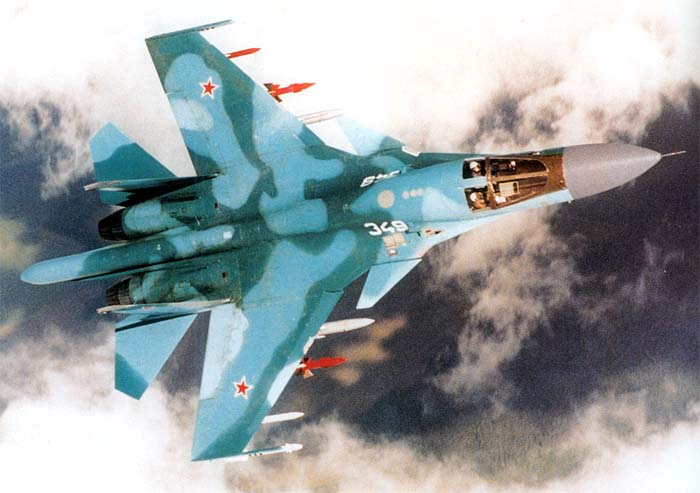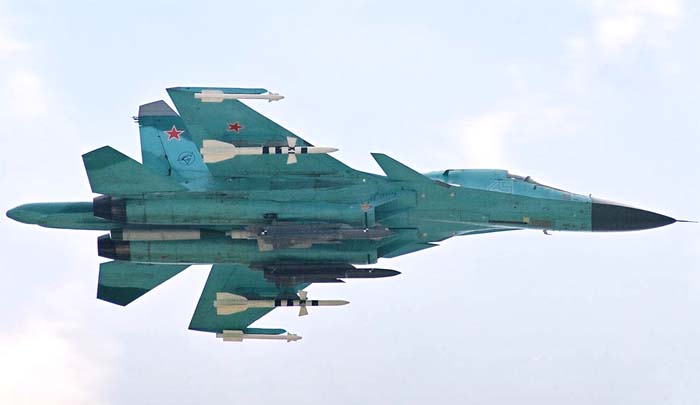The aircraft is highly effective when used for ocean surveillance, and can assist the U.S. Navy in anti-ship and mine-laying operations. In two hours, two B-52s can monitor 140,000 square miles (364,000 km²) of ocean surface. This area is about as large as a circle centered at New York City and covered as far as Washington, DC, Syracuse and Boston (radius, equaling 212 statute miles or 340 km). ..
History, especially wartime operations, has shown the value of airpower in maritime operations. Land based airpower, traveling at 420 knots, can quickly deploy to a world trouble spot and immediately begin combat operations. Even with advanced warning, ships will always be limited by the time it takes them to reach a given point on the earth. For example, a typical Atlantic crossing from Norfolk, Virginia to the Western Mediterranean could take around seven days. To compensate, we could deploy our fleet to cover all the world’s possible problem areas with ships, but this would quickly break our nation’s budget. Today’s selective use of land based airpower affords the nation a cost effective and quick alternative to engaging an enemy navy or performing a variety of maritime missions. However, Navy aircraft carriers cannot be everywhere when needed.
The US invested in the USAF bomber force during the Cold War for the maritime mission. The B-52 can carry multiple Raptor or Harpoon missiles and along with the B-1 can dispense Mk-62 bottom mines. This mining capability was demonstrated in April 1997 when two B-52s flew from Barksdale AFB, Louisiana in support of exercise Blue Harrier 97. Each aircraft deployed eight mines in the North Sea on time, on target, then returned non-stop to Barksdale. In addition, the B-52 is configured to dispense "captive mines." These sophisticated mines wait for the sounds of passing vessels before releasing a torpedo against them, thus effectively denying selected areas to an adversary. These capabilities allow the US land based anti-ship missions from the air today. Finally, bomber use of high technology Synthetic Aperture Radar allows reconnaissance of vast ocean areas, thus relieving stress on hard-pressed maritime patrol aircraft resources.
The AEF provides the Theater Commander a flexible and responsive force. The AEF is a specially tailored package which can be composed of support and strike aircraft, quickly deploy, and be ready for sustained combat operations. AEF aircraft, like the F-16 or F-15E, could engage enemy shipping with the Maverick missile or laser guided munitions. AEF bombers can add immeasurably to maritime operations with their long range and massive firepower. Air Force units which compose AEFs could quickly train for these operations in addition to maintaining the readiness required for projecting power over land. AEFs can give the US a global engagement capability to control sea lines of communication and bottle up enemy shipping when needed, freeing expensive naval assets for other tasks.
Where foreign navies have more capable ships, our current aircraft inventory can defeat them as well. Strike packages can be built with the EA-6B Prowler or F-16s equipped with the High-Speed Anti-Radiation Missile (HARM) which can effectively blind enemy ships before air attacks destroy them.
Airpower will play a key role in the future of maritime interdiction. Chairman of the Joint Chiefs of Staff, General Shalikashvili, has directed his forces to prepare for warfare in the future in his document, Joint Vision 2010 (JV 2010). In it, he provides the concepts for "Full Spectrum Dominance." One of the pillars of JV2010 is Information Superiority which gives the battlefield commander full knowledge of the location of enemy forces. In maritime cases, this would entail the knowledge of where each enemy ship is positioned. The commander can see which enemy ships are a threat and the location of commercial shipping in the area and position his forces accordingly.
Current Precision Guided Munitions (PGMs) provide the accuracy to readily attack ships and are instrumental to the future of maritime operations. Terminal guidance seekers allow the weapon to home in on the ship, not just a specific location. Location awareness and identification of ships will be essential in high traffic areas like the Strait of Hormuz where heavy commercial shipping may be present. Additionally, large scale warfare often requires unhampered access to ports. Advanced stealth aircraft, such as the B-2, F-117, and F-22 will be able to clear defensive ships in port areas as well as eliminate port defenses, like SILKWORM anti-ship missiles. This will allow the unimpeded entry of friendly naval forces and cargo ships bearing ground forces and equipment. ..
Here again, the asymmetry of airpower provides great advantage. High flying aircraft (manned or unmanned) or satellites can survey visually and electronically for miles around. Ships easily standout on the surface. As General Mitchell stated, "Surface seacraft cannot hide…They must stand boldly out on top of the water."17 Under way, they leave telltale wakes which extend for several ship lengths behind them making them even easier to spot with the naked eye or satellite sensors. Advanced electro-optical and signal analysis sensors make this task much quicker.
Anti-ship missiles hold surface ships hostage, just like Iraqi tanks were hostages of airpower during Desert Storm. Like tanks, ships use the concept of maneuver to gain an advantage over the opponent. But at sea, there is nothing to hide behind. A ship is big, relatively slow (around 30 knots), and on the defensive compared to aircraft and missiles which are small, fast (thousands of knots), and on the offensive. Ships are capital intensive and filled with expensive people. Missiles are cheap; if the missile makes a mistake, we lose a missile. If a ship makes a mistake, a nation loses an expensive asset and many sons and daughters.
During the Persian Gulf Oil Crisis, as the US Navy escorted oil tankers through the area, they relied on helicopter and aircraft support to extend the eyes of the ship over the horizon. If the same were to occur today, you can count on the use of the Joint Surveillance Target Attack Radar System (JSTARS) radar aircraft which can see moving ships and vehicles for several hundred square miles. Any fast patrol boat headed toward the convoy would be known well in advance. Since patrol boats have limited or no anti-aircraft defense, they are easy targets for aircraft.
Ships with more extensive defenses are still at a significant disadvantage. Many advanced missiles, like the SS-N-22 (NATO code name SUNBURN), travel faster than the speed of sound (over Mach 2) and have terminal maneuvers to disrupt any defense in the last few seconds of flight. Seeker heads on missiles and PGMs can discriminate decoys from the target and maneuver with the ship. When all else fails, the concept of massed attacks still apply. Salvo launches of several missiles or PGMs can easily overwhelm ship defenses. It is difficult enough to react and defend against a single warhead, reacting to and defending against 10 or 20 warheads would be unlikely.







